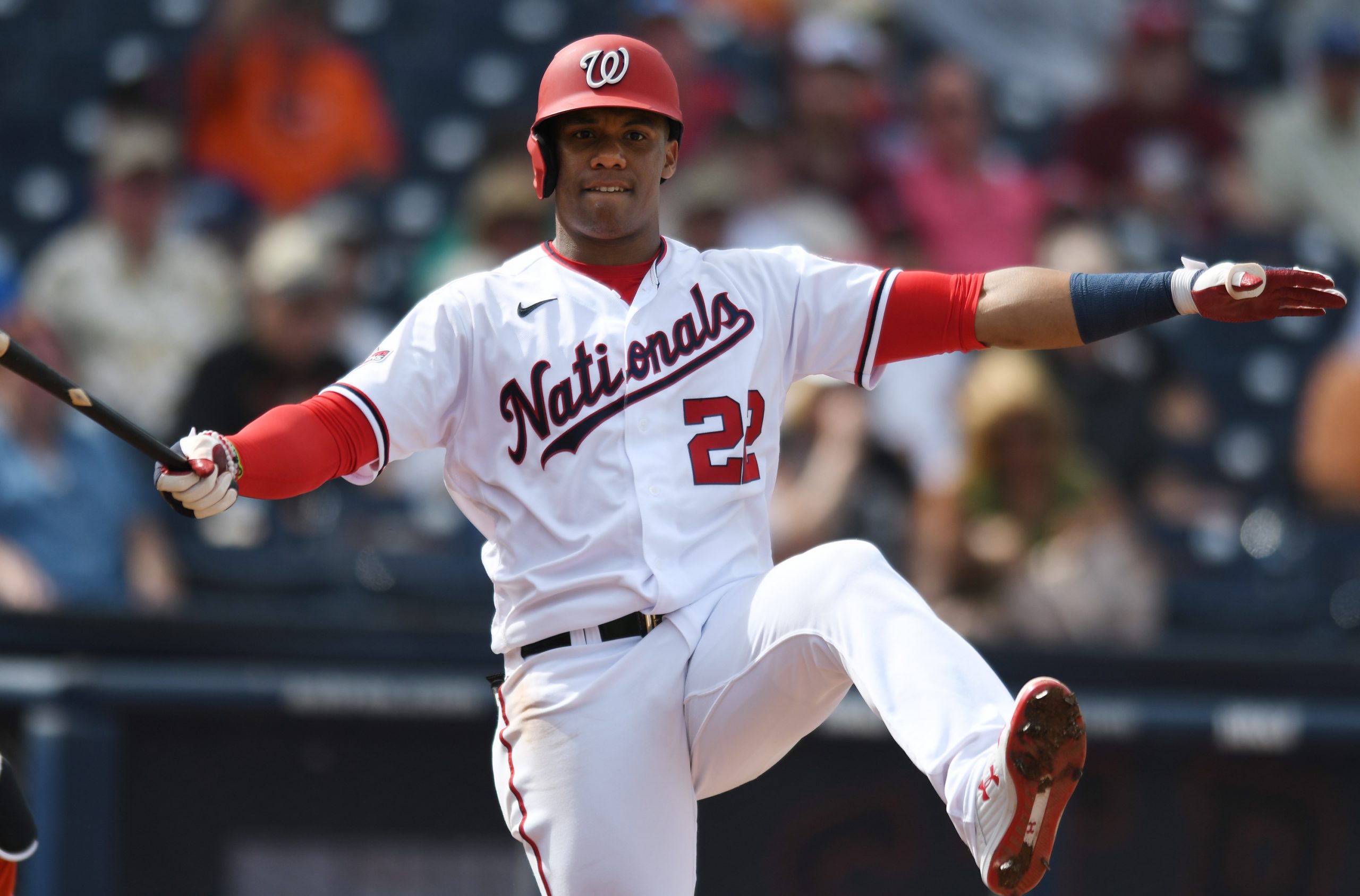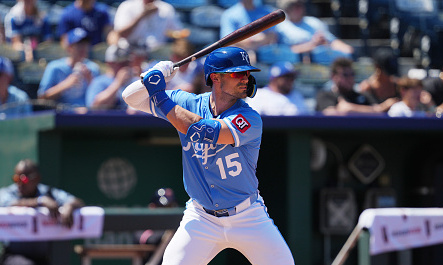Baseball-Reference is one of the best websites ever created.
One feature of Baseball-Reference is similarity scores, a statistic developed by Bill James in the 1980s.
Similarity scores are purely statistical analyses. To see the comprehensive formula for similarity scores, go to https://www.baseball-reference.com/about/similarity.shtml.
Juan Soto has captured the hearts of baseball fans across the country. With almost 500 plate appearances before turning 20, Soto had a stellar rookie season, coming up second in Rookie of the Year voting in 2018. In 2019, Soto improved, finishing top 10 in runs, RBI, offensive bWAR, and OPS+. Soto mashed 34 home runs and posted a .400 on-base percentage. Days after turning 21, Soto won the World Series with the Nationals. Soto has the world of baseball at his fingertips. Who else has taken Major League Baseball by storm at such a young age?
Here are the 10 most similar batters to Juan Soto at age-20.
Conigliaro only played eight seasons in the Majors, but he left a lasting impact in his short career. Starting at 19, Conigliaro mashed baseballs out of Fenway Park at a rate that no teenager has matched. After an electric rookie campaign, Conigliaro hit 20 or more home runs in his next five seasons (excluding 1968 when he did not play).
After 36 home runs in 1970, Conigliaro’s eyesight began to decline, a consequence of Conigliaro receiving a fastball to his face in 1967.
In contrast to Conigliaro, Mantle hammered out an 18-year career with the Yankees. Debuting at 19, Mantle followed up a solid season with an elite sophomore campaign, placing third in the 1952 AL MVP race. Mantle made the All-Star team in 16 different seasons, won a trio of MVPs, and finished second three times. Mantle led the AL in walks five times and OPS+ eight times, including five straight seasons from 1958 to 1962.
If Soto could match Mantle’s production, the Nationals would have a superstar for the better part of the next two decades.
Through two seasons, Robinson had notched a pair of All-Star nods and a pair of top 10 MVP votes. Robinson played 21 seasons for five different teams, winning the 1961 NL MVP with the Reds and the 1966 AL MVP with the Orioles. Robinson posted six seasons with an on-base percentage over .400 and had four seasons with a 1.000 or better OPS.
Robinson finished his career with a 107 offensive WAR and received 89 percent of the vote in his Hall of Fame selection.
Washington’s old prodigal son, Harper started his Nationals career with a bang and a Rookie of the Year on his shelf. Harper has become one of the most feared power hitters in the NL as he routinely hits 30 home runs and walks 100 times. Harper’s 2015 NL MVP campaign was one of the most dominant seasons of the 2010s with his 1.109 OPS and ridiculous .649 slugging percentage.
Harper has received flak in the past for a low batting average, but he is a superstar, and Soto should have his eyes on Harper’s peak.
In eight full seasons, Trout has finished outside the top two in AL MVP voting once (fourth in 2017). Trout has led the AL in runs four times, RBI and steals once, walks three times, on-base percentage four times, slugging three times, OPS four times, and OPS+ a ridiculous six times. The three-time AL MVP has a resume that can be compared with any legend favorably.
Only Babe Ruth, Ted Williams, Barry Bonds, and Lou Gehrig have a higher OPS+ for their careers.
After a strong rookie season, Griffey rattled a decade of elite play with the Mariners. Griffey placed in the top 10 of AL MVP voting seven times, including a 1997 MVP win. Griffey swept 10 Gold Gloves and added seven Silver Sluggers. The second decade of Griffey’s career slowed down, but he tacked on three All-Star campaigns and 232 homers.
Griffey is 35th in WAR for position players and only six players have more home runs than the former first overall pick.
Ott played 35 games at age-17 and 82 at age-18 before catching on as a full-time player in 1928 at age-19. In his age-20 season, Ott led the NL in walks and posted his first of seven 1.000 OPS seasons. Ott never won the MVP, but he received votes 13 times in his 22 seasons. Ott finished his career with 2,800 hits and 500 home runs to go along with a career .414 on-base percentage.
Only 15 position players managed to post a higher career WAR than Ott.
Pinson burned brightly as a young player, playing alongside Frank Robinson in Cincinnati’s outfield for a decade. Pinson was an All-Star at 20 and 21 and was third in NL MVP voting at 22. After a .883 OPS in 1962, Pinson began to decline. He had consistently solid seasons, posting 200 hits and a .300 batting average four times, but his 2,757 career hits appear to be accumulation more than domination.
Pinson maxed out with 15.7 percent of the Hall of Fame vote.
After finishing third in Rookie of the Year voting, Kaline broke out in a big way in 1955. Kaline led the AL in hits, batting average, and total bases, finishing second in the MVP race. Kaline finished third in 1956 and continued to receive MVP votes for 10 of the next 11 seasons. Kaline racked up 3,007 hits and 399 home runs to go along with a career 134 OPS+.
At age-33, Kaline shined in the 1968 World Series, helping the Tigers to their first World Series in 23 years.
Cedeno was a good player for the Astros and Reds in the 1970s and 1980s. A member of the 500-steal club, Cedeno received MVP votes five times, won five straight Gold Gloves in center field and was a four-time All-Star. Cedeno had six seasons with 50 steals and seven seasons with 30 doubles. Cedeno posted a career OPS+ of 123 including a high-water mark of 162 in his age-21 season.
While not a Hall of Fame-caliber player, Cedeno was the best player on an average Astros team for most of his career.
Check out Ronald Acuña Jr.’s historical contemporaries here: https://primetimesportstalk.com/2020/02/25/ronald-acunas-historical-contemporaries/.
Check out an analysis of Soto’s on-field skills here: https://primetimesportstalk.com/2019/09/01/a-walk-in-the-park-why-juan-soto-is-a-living-legend/.







